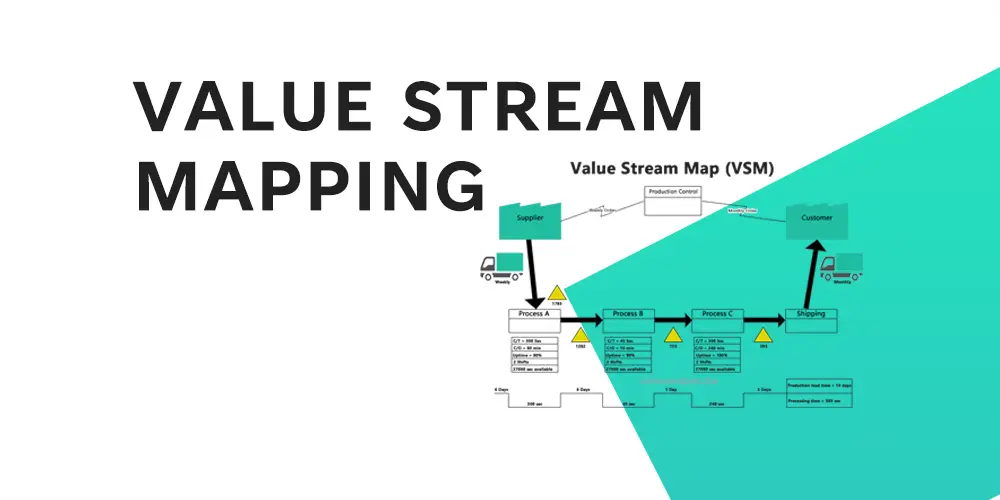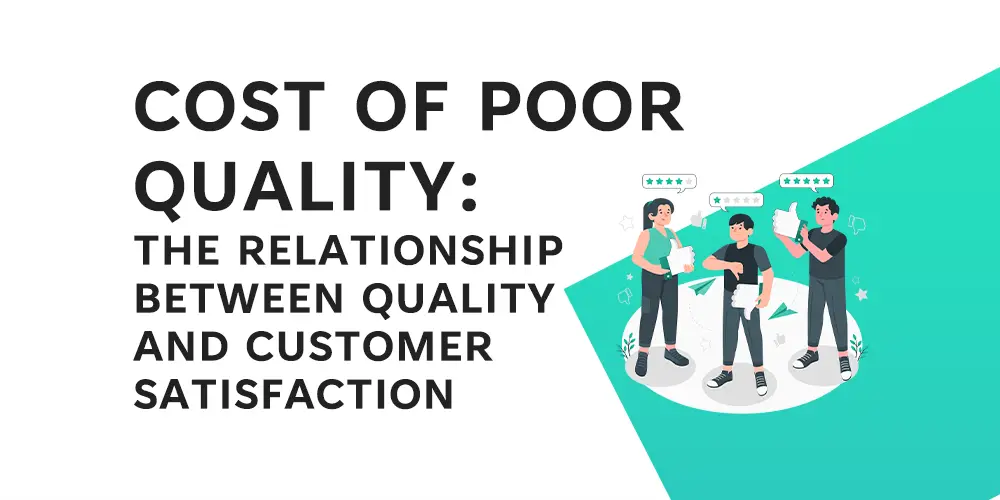In today’s ever-changing and fiercely competitive business landscape, the ability to adapt, evolve, and consistently improve is critical to long-term success. Nonetheless, despite its critical importance, many businesses face formidable challenges when attempting to implement effective continuous improvement initiatives.
In this article, we will go over the seven primary reasons for the frequent failures of continuous improvement in businesses. By investigating these roadblocks, you will gain invaluable insights into the factors that impede progress and discover actionable strategies to overcome them.
Reason 1: Lack of Leadership Support and Engagement
Problem
One of the critical challenges that hinder the success of continuous improvement initiatives in businesses is the lack of leadership support and engagement. When leaders do not actively endorse and participate in improvement efforts, it becomes difficult to drive meaningful change and sustain improvement over the long term. Without leadership buy-in, employees may perceive continuous improvement as a low priority, leading to a lack of enthusiasm and limited resources allocated to improvement projects.
Solution
Leadership buy-in is critical for successful implementation:
The commitment of leaders is essential for the successful implementation of continuous improvement initiatives. When leaders demonstrate their dedication to continuous improvement, they foster a culture that values and promotes continuous learning, growth, and innovation. Leadership buy-in is a powerful motivator for employees because it signals that improvement is a priority and reinforces the organization’s commitment to change.
Strategies for gaining support and engagement from leaders include:
- a. Communicate the advantages: Explain to leaders the potential benefits of continuous improvement, such as increased operational efficiency, cost savings, improved customer satisfaction, and a market competitive advantage. Assist leaders in understanding how continuous improvement aligns with the strategic goals of the organization and contributes to overall success.
- b. Education and training: Provide leadership education and training programs on continuous improvement principles, methodologies, and their role in driving the process. Provide leaders with the knowledge and skills they need to effectively champion improvement efforts. This training can assist leaders in understanding their responsibilities, leading improvement teams, and promoting a continuous improvement culture throughout the organization.
- c. Lead by example: Leaders should actively participate in improvement activities, demonstrating their commitment to continuous improvement. Attending improvement meetings, providing necessary resources, removing roadblocks to progress, and implementing improvement projects within their respective areas of responsibility are all part of this. When leaders set a good example for their employees, it inspires and motivates them to participate in the improvement process and reinforces the importance of continuous improvement in the organization.
Businesses can lay a solid foundation for successful continuous improvement initiatives by recognizing the importance of leadership support and addressing resistance to change. Overcoming these obstacles creates a more positive and welcoming environment in which continuous improvement becomes ingrained in the organization’s culture.
Reason 2: Resistance to Change and Fear of Unknown
Problem
Resistance to change and fear of the unknown are common roadblocks to the success of business continuous improvement initiatives. Employees may resist changes to processes, systems, or ways of working because of job security concerns, uncertainty about the impact of the changes, or simply a preference for the status quo. This opposition can stymie progress, slow implementation, and undermine the overall effectiveness of continuous improvement efforts.
Solution
Understanding common sources of resistance to change:
Organizations can address sources of resistance effectively and develop targeted strategies to mitigate resistance by identifying them. Among the most common sources of resistance to change are:
a. Job insecurity: Employees may be concerned that process improvements will make their jobs obsolete or result in layoffs. It is critical to emphasize that the goal of continuous improvement is to increase productivity, efficiency, and value creation rather than to eliminate jobs. Transparent communication about the changes’ purpose and benefits can help alleviate concerns about job security.
b. Lack of awareness or understanding: Resistance may stem from a lack of understanding of the proposed changes’ purpose, benefits, and rationale. Clear and consistent communication is essential for providing employees with the necessary information, ensuring that they understand why the changes are required and how they align with the organization’s goals.
c. Comfort with the status quo: People often resist change because they are accustomed to their routines and are afraid of disrupting their established ways of working. Highlight the need for change by emphasizing the limitations of current processes as well as the potential benefits of proposed improvements. By demonstrating the positive outcomes that change can bring, examples and success stories from other organizations can help overcome resistance.
Techniques for overcoming resistance and cultivating a positive mindset include:
Organizations can use the following techniques to overcome resistance and foster a positive attitude toward change:
- a. Effective communication: It is critical to maintain open and transparent communication about the purpose, benefits, and anticipated impact of the changes. Allow employees to ask questions, express concerns, and provide feedback through multiple channels. Addressing these concerns in a timely and compassionate manner can help to allay fears and foster trust.
- b. Collaboration and participation: Involve employees in the change process by soliciting their ideas, suggestions, and feedback. This fosters a sense of ownership and empowerment among employees, making them feel valued and involved in decision-making. Encourage participation in improvement teams and provide opportunities for individuals to contribute to the design and implementation of changes.
- c. Training and support: Provide training programs and resources to employees in order to equip them with the necessary skills and knowledge to adapt to changes. During the transition period, provide ongoing support such as coaching, mentoring, and additional training. Individuals gain confidence in their abilities to navigate changes and embrace new ways of working as a result of this.
Organizations can overcome resistance to change, foster a positive mindset, and create an environment conducive to the successful implementation of continuous improvement initiatives by understanding the sources of resistance to change and employing effective techniques. Accepting change as an opportunity for growth and improvement enables organizations to realize their full potential and achieve long-term success.
Reason 3: Inadequate Employee Engagement and Participation
Problem
One significant reason for the failure of continuous improvement initiatives in businesses is the lack of adequate employee engagement and participation. When employees are not actively involved in the improvement process, the initiatives’ effectiveness suffers and the potential for significant improvements is reduced. Organizations lose valuable insights, ideas, and commitment when employees are not engaged, which is critical for driving successful continuous improvement efforts.
Solution
Employee involvement in the improvement process is critical: Employee engagement is a key driver of successful continuous improvement. Organizations can tap into their employees’ expertise, firsthand knowledge, and creativity by involving them in the improvement process. Employees who are engaged become invested in the success of improvement initiatives, bringing new perspectives, innovative ideas, and a sense of ownership. Their participation fosters a collaborative environment and promotes an organizational culture of continuous improvement.
Methods for increasing employee engagement and participation:
- a. Establish open lines of communication: Open lines of communication should be established to encourage employees to share their ideas, suggestions, and concerns about improvement initiatives. Provide platforms for employees to freely contribute their ideas, such as suggestion boxes, improvement suggestion forums, or regular improvement meetings.
- b. Provide training and resources: Provide training programs and resources to employees to equip them with the skills and knowledge they need to actively participate in improvement activities. Giving employees the tools and training they need to contribute effectively boosts their confidence and engagement in the process of improvement.
- c. Recognize and celebrate employee contributions: Recognize and celebrate the efforts and contributions of employees who actively participate in quality-of-life initiatives. Recognition can take the form of public praise, rewards, or opportunities for professional development. This recognition reinforces the importance of employee participation and encourages others to participate as well.
Organizations can unlock the full potential of their workforce by involving employees in the improvement process and creating a supportive environment. Employee engagement fosters a culture of continuous improvement, driving innovation, efficiency, and, ultimately, the organization’s long-term success.
Reason 4: Insufficient Resource and Training
Problem
Inadequate resources and training pose significant challenges to the success of business continuous improvement efforts. It is difficult to implement and sustain improvement initiatives when organizations lack the necessary resources, such as budget, staffing, or technology. Furthermore, a lack of appropriate training limits employees’ ability to contribute meaningfully to improvement efforts, limiting the potential for significant and long-term improvements.
Solution
a. Solutions for allocating resources effectively: Prioritize resources based on the potential impact of improvement initiatives. Conduct a thorough analysis to identify areas where resources will have the greatest impact. Consider shifting resources away from low-value activities and toward high-value improvement projects. In order to maximize resource utilization, look for opportunities for collaboration and resource sharing between departments.
b. Training is provided as needed: Provide comprehensive training programs that provide employees with the knowledge and skills they need to be successful in their improvement efforts. Employee training should be tailored to their specific needs, with a focus on relevant methodologies, tools, and techniques. To ensure that employees can effectively contribute to improvement projects, emphasize practical application and provide ongoing support.
Organizations can overcome the challenges posed by limited resources and inadequate training by effectively allocating resources and providing comprehensive training. This ensures that improvement initiatives have the necessary resources, expertise, and capabilities to effect meaningful change and achieve long-term outcomes. Investing in resources and training is a key driver for maximizing the potential of businesses’ continuous improvement efforts.
Reason 5: Ineffective Communication and Alignment
Problem
Ineffective communication and a lack of alignment are significant barriers to the success of business improvement initiatives. Employees experience misunderstandings, misinterpretations, and a lack of shared understanding when communication is unclear or inconsistent. When goals and objectives are not effectively communicated, or when different departments or teams have competing priorities, poor alignment occurs. This breakdown in communication and alignment impedes the coordination, collaboration, and overall effectiveness of continuous improvement efforts.
Solution
The importance of clear communication in driving successful improvement initiatives:
Effective improvement initiatives require clear communication. It ensures that everyone understands the project’s purpose, goals, and expected outcomes. Clear communication fosters a sense of ownership among employees and promotes their active participation in the initiatives by creating a shared understanding of the improvement process.
Strategies for improving communication and goal alignment throughout the organization:
- a. Create a communication strategy: Create a comprehensive communication plan outlining the key messages, target audience, and channels for sharing information about improvement initiatives. Keep employees informed and engaged by communicating updates, progress, and successes on a regular basis.
- b. Improve transparency: Create a transparent environment in which information about improvement initiatives, challenges, and progress is freely shared. Transparency fosters trust and encourages employees to provide feedback, suggestions, and improvement ideas.
- c. Encourage cross-functional collaboration: Cross-functional collaboration should be encouraged to improve communication and alignment. Make platforms or forums available for different departments or teams to share their experiences, challenges, and best practices. This encourages knowledge sharing and provides opportunities for learning and improvement throughout the organization.
- d. Align goals and objectives: Make sure the goals and objectives of improvement initiatives are clearly communicated and aligned with the overall organizational strategy. Cascade these objectives down to different levels of the organization so that each team and individual understands how their contributions contribute to the larger improvement goals.
Businesses can overcome the challenges of ineffective communication and alignment by implementing effective communication strategies and improving alignment across the organization. Clear and consistent communication fosters collaboration and improves the coordination of improvement efforts. When goals and objectives are in sync, employees can collaborate to achieve common improvement targets, maximizing the impact of continuous improvement initiatives.
Reason 6: Lack of Continuous Improvement Culture
Problem
The lack of a continuous improvement culture is a significant barrier to the success of business improvement initiatives. Without a continuous improvement culture, organizations may face resistance, complacency, and a lack of enthusiasm for change and improvement efforts. This limits the organization’s ability to drive long-term improvement and the adoption of new processes, tools, and methodologies.
Solution
The value of a culture that values continuous improvement:
Organizations seeking long-term success must foster a culture of continuous improvement. It fosters innovation and encourages employees at all levels to actively contribute to identifying and implementing improvements by instilling a mindset of seeking opportunities for improvement. A continuous improvement culture fosters a sense of ownership, accountability, and empowerment among employees, fostering a change- and improvement-friendly environment.
Methods for fostering an organizational culture of continuous improvement:
- a. Leadership dedication: Leaders must demonstrate and communicate their dedication to continuous improvement. They should take an active role in improvement initiatives, communicate the importance of improvement, and recognize and celebrate improvement efforts and accomplishments.
- b. Employee participation: Involve employees in the process of improvement by encouraging them to contribute their ideas, insights, and expertise. Empower employees to identify opportunities for improvement, implement changes, and make decisions that affect their work processes.
- c. Training and development: Provide training programs and workshops on the principles, methodologies, and tools of continuous improvement. This provides employees with the necessary skills and knowledge to effectively engage in improvement activities.
- d. Communication and knowledge sharing: Encourage the sharing of best practices, lessons learned, and success stories related to improvement efforts through open communication channels. To foster a culture of continuous learning and improvement, encourage the exchange of ideas, feedback, and suggestions.
- e. Recognition and rewards: Recognize and reward individuals and teams for their contributions to continuous improvement. Celebrate successes, emphasize the impact of improvements, and recognize employees who embody the culture of continuous improvement.
Organizations can foster innovation, growth, and adaptation by cultivating a culture that values continuous improvement. This culture empowers employees to effect positive change and strengthens the organization’s ability to remain competitive and responsive in a rapidly changing business environment.
Reason 7: Failure to Measure Progress and Sustain improvement
Problem
In continuous improvement efforts, a lack of measurement and tracking can stymie progress and lead to the failure to sustain improvements over time. Organizations cannot identify areas of success or areas that require additional attention unless they use a systematic approach to measuring progress. Failure to sustain improvements can lead to a return to previous practices, reducing the long-term impact of continuous improvement initiatives.
Solution
Measurement and tracking are critical components of continuous improvement:
Measuring and tracking are critical for determining the effectiveness of improvement initiatives and identifying areas for improvement. They offer valuable insights into the impact of changes, allow for data-driven decision-making, and foster a culture of continuous learning and improvement.
Methods for establishing metrics, tracking progress, and sustaining improvement:
- a. Establish clear metrics: Set clear, specific, and measurable metrics that align with the improvement initiatives’ goals and objectives. Metrics should be linked to key performance indicators (KPIs) and focused on areas that add value to the organization.
- b. Implement a tracking system: Create a system for collecting and analyzing data related to the identified metrics on a regular basis. This allows for continuous progress monitoring, trend identification, and timely intervention if deviations occur.
- c. Regular review and reflection: Conduct periodic reviews and reflection sessions to assess progress, analyze data, and identify opportunities for further improvement. Use these sessions to celebrate successes, address challenges, and make necessary adjustments.
- d. Continuous feedback loops: Establish mechanisms for collecting feedback from employees and stakeholders involved in improvement initiatives. This feedback provides useful insights, identifies potential problems, and guides future improvement efforts.
Organizations can better understand the impact of their improvement efforts and take corrective actions by implementing a robust measurement and tracking system. Organizations can sustain improvements, identify areas for further improvement, and drive continuous progress toward their goals by conducting regular monitoring, analysis, and reflection.
Conclusion
To summarize, the success of business continuous improvement initiatives is dependent on confronting common challenges head on. Organizations can pave the way for transformative change by recognizing the importance of leadership support, overcoming resistance to change, involving employees, allocating resources effectively, improving communication and alignment, cultivating a continuous improvement culture, and implementing measurement and tracking systems.
Adopting continuous improvement as a core value fosters an environment of innovation, collaboration, and growth. Businesses can unlock their full potential, achieve operational excellence, and thrive in today’s dynamic and competitive business landscape with commitment, effective strategies, and a focus on long-term progress. Continuous improvement becomes a way of life, driving long-term success and propelling organizations to new heights.








